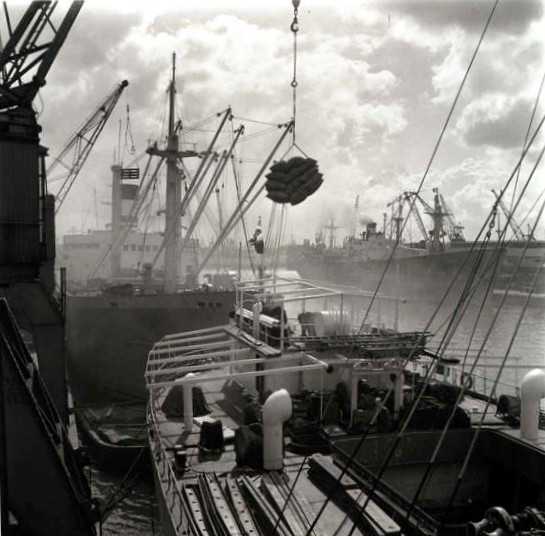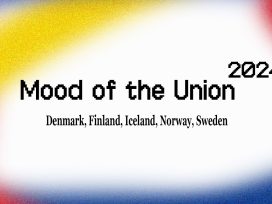When America was “discovered”, Spain and Portugal established extensive colonies in the “New World”, and other European states soon followed suit. The Swedish government also tried to establish colonies on other continents: the seventeenth century colonies Nya Sverige (New Sweden, in Delaware in what is now the US) and Cabo Corso (in what is now Ghana) were short-lived. After that, the Swedish state made a number of failed colonisation attempts (for example, Tobago, Madagascar and Guyana’s coast) during the second half of the eighteenth century. When Gustav III came to power, Sweden had no colonies whatsoever on other continents – a loss of prestige that the king could not accept.
During the American War of Independence, France provided military for the revolutionaries against their arch enemy Great Britain. Along with the peace negotiations in 1783, France came to receive two islands in the Caribbean – Tobago and St Lucia. The Swedish king saw his chance. The Swedes had tried to colonise Tobago previously – so how could the French king deny Sweden this island now? At the same time, Gustav was not too fastidious. In a letter to the Swedish ambassador in Paris, Gustav Creutz, he wrote that he would be happy with any old island in the West Indies – in fact, if the situation demanded it, even just a place to store Swedish goods (without having to pay customs on them). The Swedish king also hoped that Louis XVI’s foreign minister Vergennes would himself realise “the advantage France would have, if during a future war the Royal Majesty had a colony in that part of the world”. But, small-mindedly, as Gustav himself put it, the French saw no such advantage – but rather demanded compensation in the form of trading benefits. The fact that the Swedish king had had diplomatic conversations with Catherine II of Russia, which the French foreign minister learned about, also played a role: there was a risk that the historical Swedish-French alliance would dissolve, and the French wanted to prevent this.
The negotiations dragged out for almost a year and Gustav Creutz was replaced by a new ambassador, Eric Magnus Staël von Holstein. Finally, in July 1784, the parties reached an agreement. Sweden made no concessions other than supplying a storage place for French goods in Gothenburg. The French king, in turn, did not want to lose Tobago. But he could offer the Caribbean island of St Barthélemy to the Swedish king. The tractate from 1 July 1784, which the regents signed, states:
Article 4. His Majesty’s subjects shall always have the right to store, in Gothenburg’s harbour, in the place, and with the provisos that will be decided upon, all necessities, products and trade goods, either from France or its colonies in America, which are transported on French ships. […]
Article 8. In trade for and as compensation for those benefits, which French trade and sea-faring, through the implementation of this freedom of storage in Gothenburg, receives, his Majesty gives for ever to the King and Crown of Sweden, complete ownership and control of the island St Barthélemy in the West Indies.
The Swedish slave trade on St Barthélemy
At that time, the Swedish state did not have the best of finances, and many had probably hoped that the negotiations with France would be significantly more successful than they ended up being. The King himself needed a personal success in negotiation, if for nothing else than as propaganda after his long journeys abroad spent try to obtain colonies or financial subsidies for the Swedish state. The former Swedish ambassador Gustav Creutz commented on the somewhat slender results of the negotiations in a letter to the king: “C’est toujours quelque chose à presenter aux yeux de la nation” (“It is always something to show the nation”). He does not seem to be particularly overwhelmed, which is unsurprising. The reason why the French chose to offer St Barthélemy is because it was the least valuable of all their colonies in the West Indies, and the island was geographically distant from the others.

Port of Gothenburg, 1947. Photographer: K W Gullers, Source: Nordiska Museet/Wikimedia
The island that Sweden thereby came to control was stony and just 24 square kilometres in size. At the time of the early expeditions, it was realised that it would never serve plantation purposes as other countries’ colonial possessions did. Nor did the small population form a significant market for Swedish products. The solution was to declare St Barthélemy, and its capital Gustavia, an international free port. Ships from various nations could trade here, paying a smaller customs fee.
For a short time, St Barthélemy became an important transit harbour for American tradesmen. One important commodity was slaves. The Swedish West India company got the king’s blessing to trade slaves, with the king retaining a quarter of the profits. But soon other countries decided to forbid slave trade – Denmark in 1792 and Great Britain in 1807. During the Vienna Congress in 1815, Sweden too signed a declaration forbidding slave trading. Yet boats with slaves continued to come to St Barthélemy. It would take until the 1830s before slave ships stopped calling at Gustavia – around the same time that Great Britain decided to get rid of slavery completely. No one seems to have tried to count how many slaves passed through the Swedish colony. At its height, in 1812, there were around 2400 slaves on the island itself. But most of the slave trade in Gustavia was transit trade that left the island, including to the American south. In sum, the trade was probably very small compared to the many millions of slaves that made up the transatlantic trade in total.
Franska tomten: The French block
In exchange, Gustav III offered Louis XVI a storage place in Gothenburg. It came to be called Franska tomten (the French block) – the first map in the Gothenburg City Museum collection that explicitly uses this name is from 1802. Paradoxically, there was some confusion about where Franska tomten actually was. What is now Packhusplatsen was at that time a dockyard, called Masthamnen harbour, which was part of Stora Hamnen, or the Large Harbour (now Stora Hamnkanalen, or Large Harbour Canal). There is no doubt that Franska tomten was near Masthamnen. Today, there is a block called Franska tomten, near Packhusplatsen (area 20 in Nordstaden). In the Gothenburg City Museum history, the name Franska tomten is given to this area.
Yet it is most likely historically incorrect that Franska tomten was here. The Gothenburg City Museum archive contains three contemporary maps (from 1802, 1809 and 1817) that use the name Franska tomten. They all point to one of the properties in a neighbouring block – the area on the corner of Norra Hamngatan and Packhusplatsen, where the Court of Appeals now is, in the block that is now called Stora Tullen (area 13 in Nordstaden). In the Gothenburg City Museum’s history of Gothenburg’s city centre, there is said to have been two brick buildings there in 1850 – no buildings before then are mentioned. In the Gothenburg City Museum archive, no contemporary map suggests that the historical Franska tomten was located in the area that today bears the name. This misapprehension probably arose when the current area-division was carried out in 1920, as seen in the large map of Gothenburg that was prepared for the jubilee exhibit in 1923.
According to the tractate from 1784, French subjects had the right “for all time” to a storage place in Gothenburg. In exchange, the king would get St Barthélemy “for ever”. But the Swedish colony in the Caribbean was never the financial success that Gustav III hoped for. Perhaps there was cold comfort in knowing that French traders never received much financial profit from Franska tomten either. At the beginning of the nineteenth century – exactly when is unclear – they seem to have stopped using the storage place.
In 1815, the General Customs Office requested that a victual scale (a provisions scale) be established in Franska tomten. It seems that the proposal was not approved, but the request suggests that, by that time, French traders did not use the area anymore. Later, during the nineteenth century, Masthamnen harbour was also closed, and the muddy and reedy land around it drained. The foundation was laid for today’s Packhusplats.
In 1878, the Swedish crown sold St Barthélemy back to France. There is nothing left today of the historic buildings in Franska tomten. All that remains is a name from a long-gone time.








